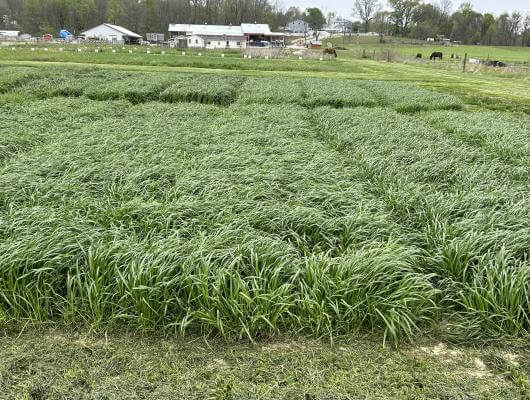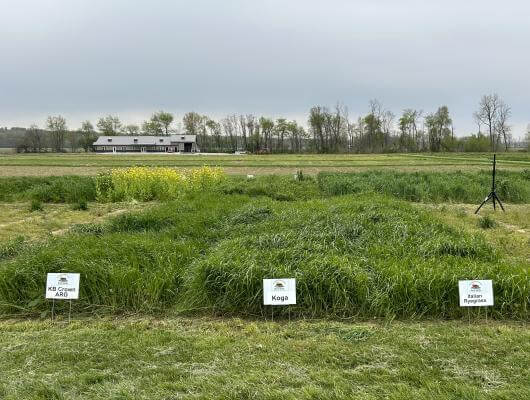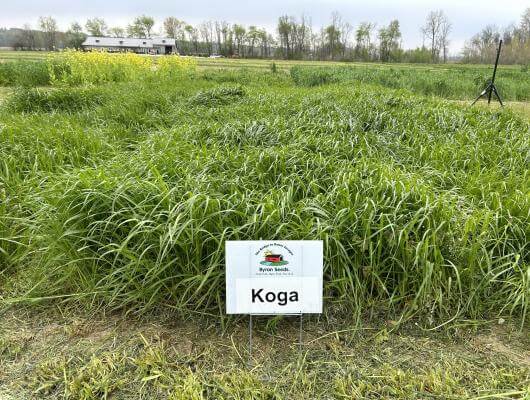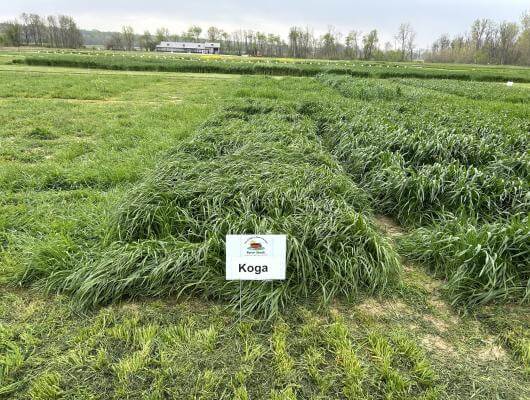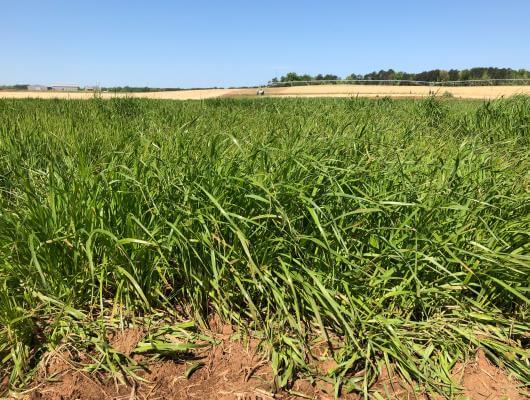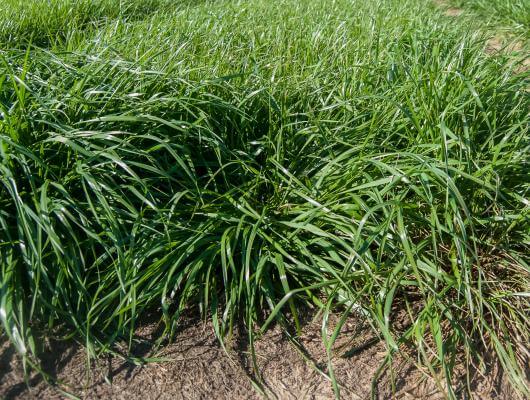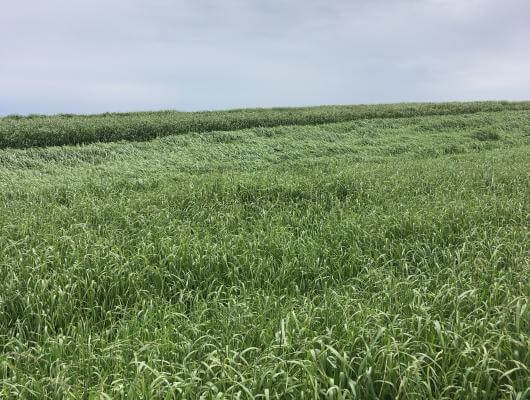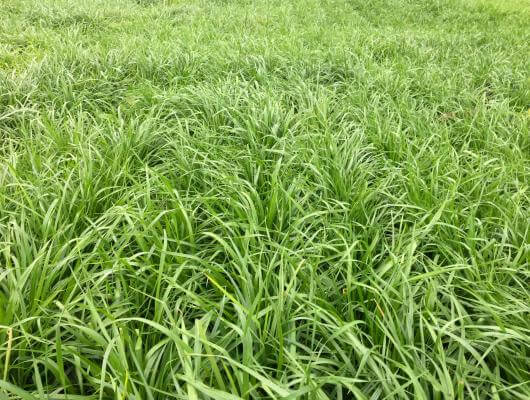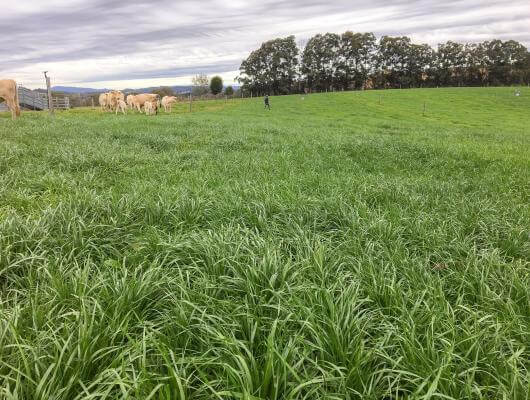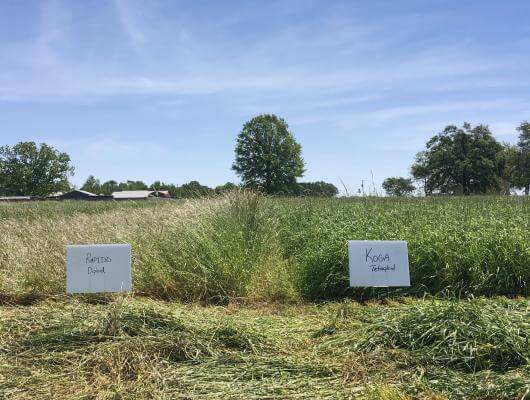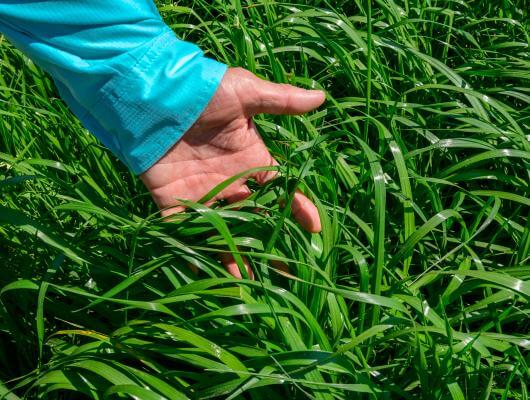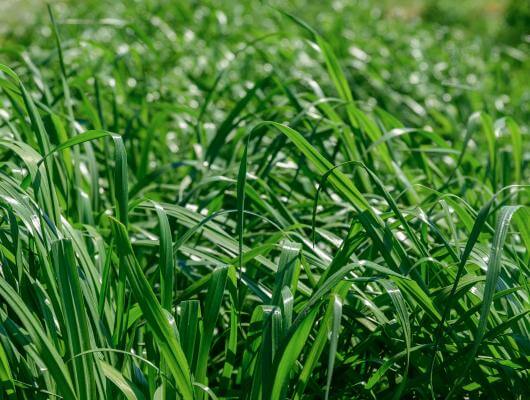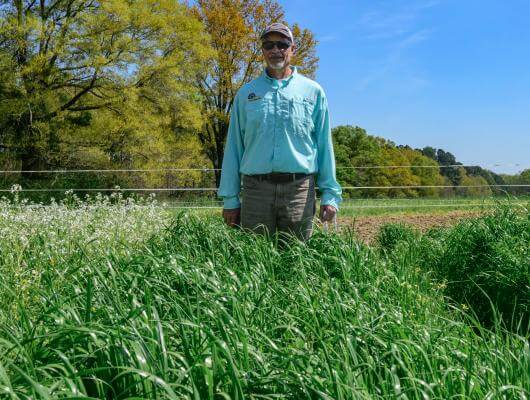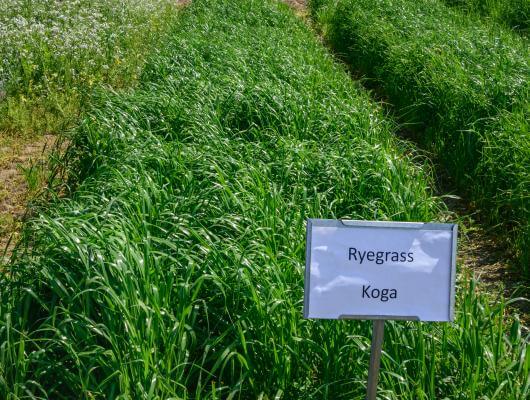Koga Tetraploid Annual Ryegrass
Koga is a unique forage ideally suited for producers desiring high-quality, late-season, highly vegetative ryegrass. Koga is a great forage for demanding livestock and can be grazed, harvested or used as a cover crop.
A Unique Forage
Koga tetraploid annual ryegrass is a very unique forage ideally suited for producers desiring late-season, highly vegetative ryegrass. Koga produces high-quality forage especially useful for demanding livestock, such as dairy and beef cattle. Koga may be safely grazed by all livestock, as well as harvested for stored feed. It can also be used as a cover crop.
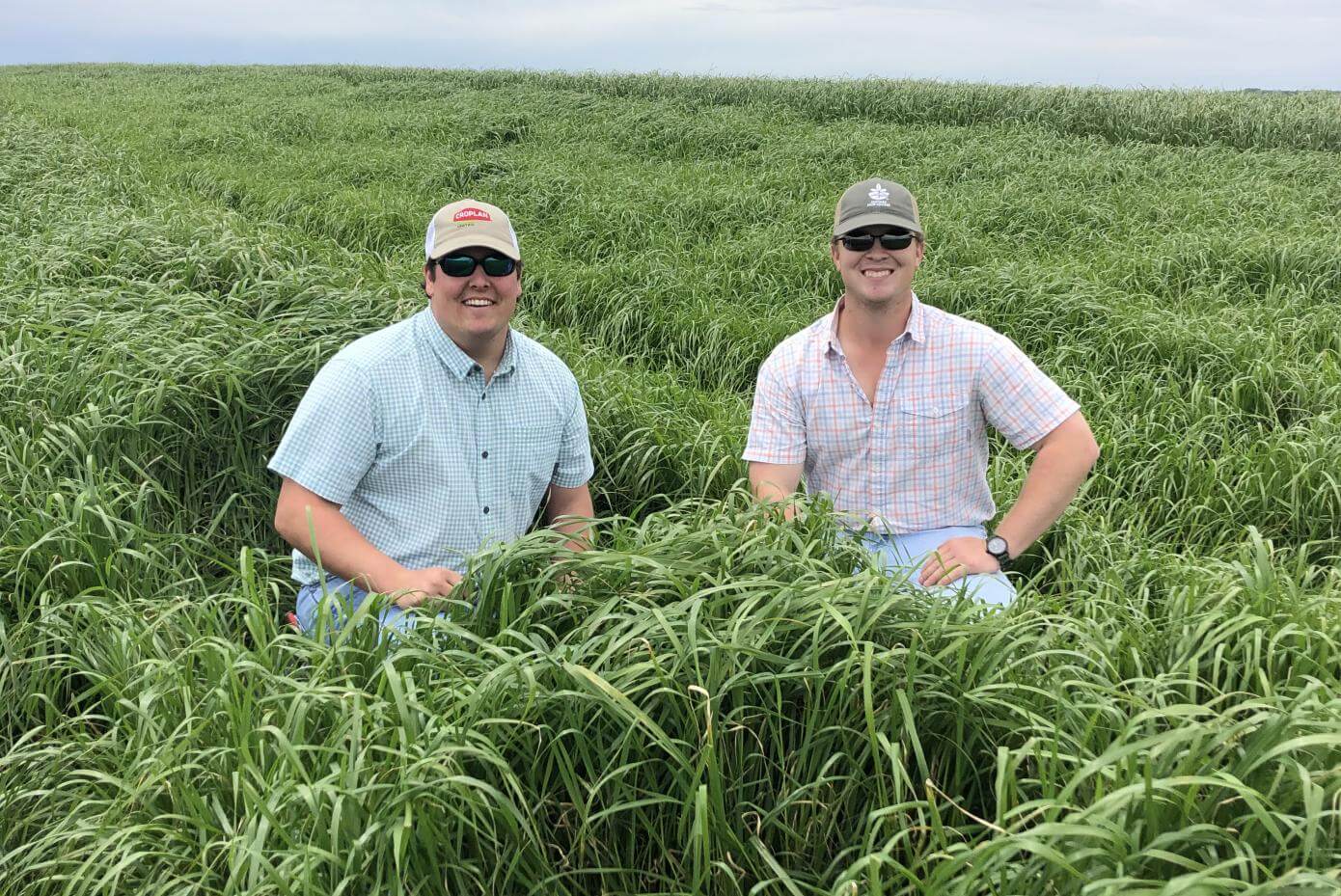
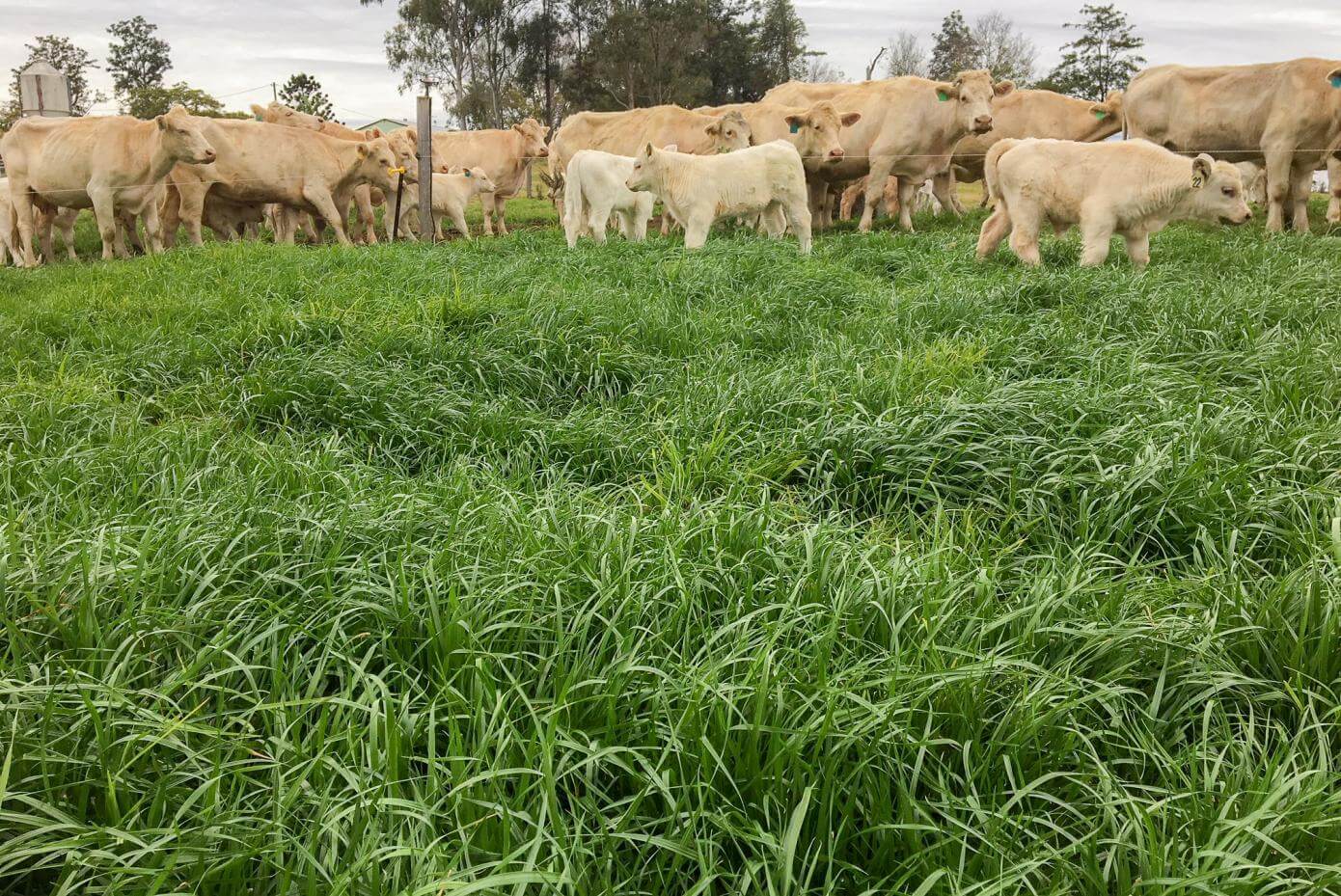
Vegetative & Tender—For Longer
Koga’s growth curve is notably later than many annual ryegrasses. This means Koga remains vegetative, tender and lush longer.
Koga for the North
Northern producers can plant Koga in either the fall or spring. Koga has shown good winter hardiness, staying dormant through the colder winter months, but becoming very productive in late spring and providing extended production ideal for high demand livestock and late stored feed production. Koga may also be planted in the spring in regions with limited growing seasons. Koga should remain vegetative for longer than many other annual ryegrasses.
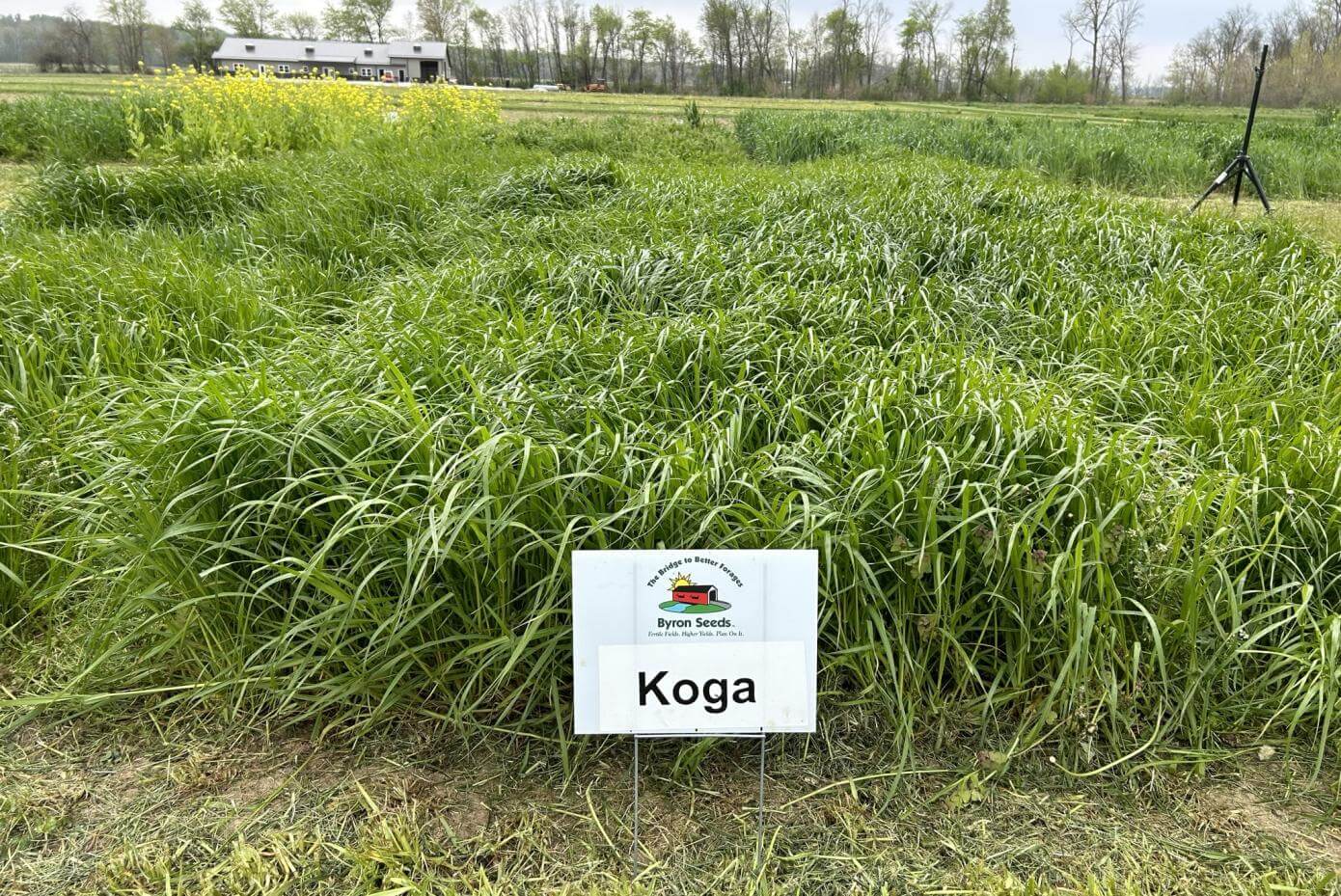
Koga in Illinois - April 2023
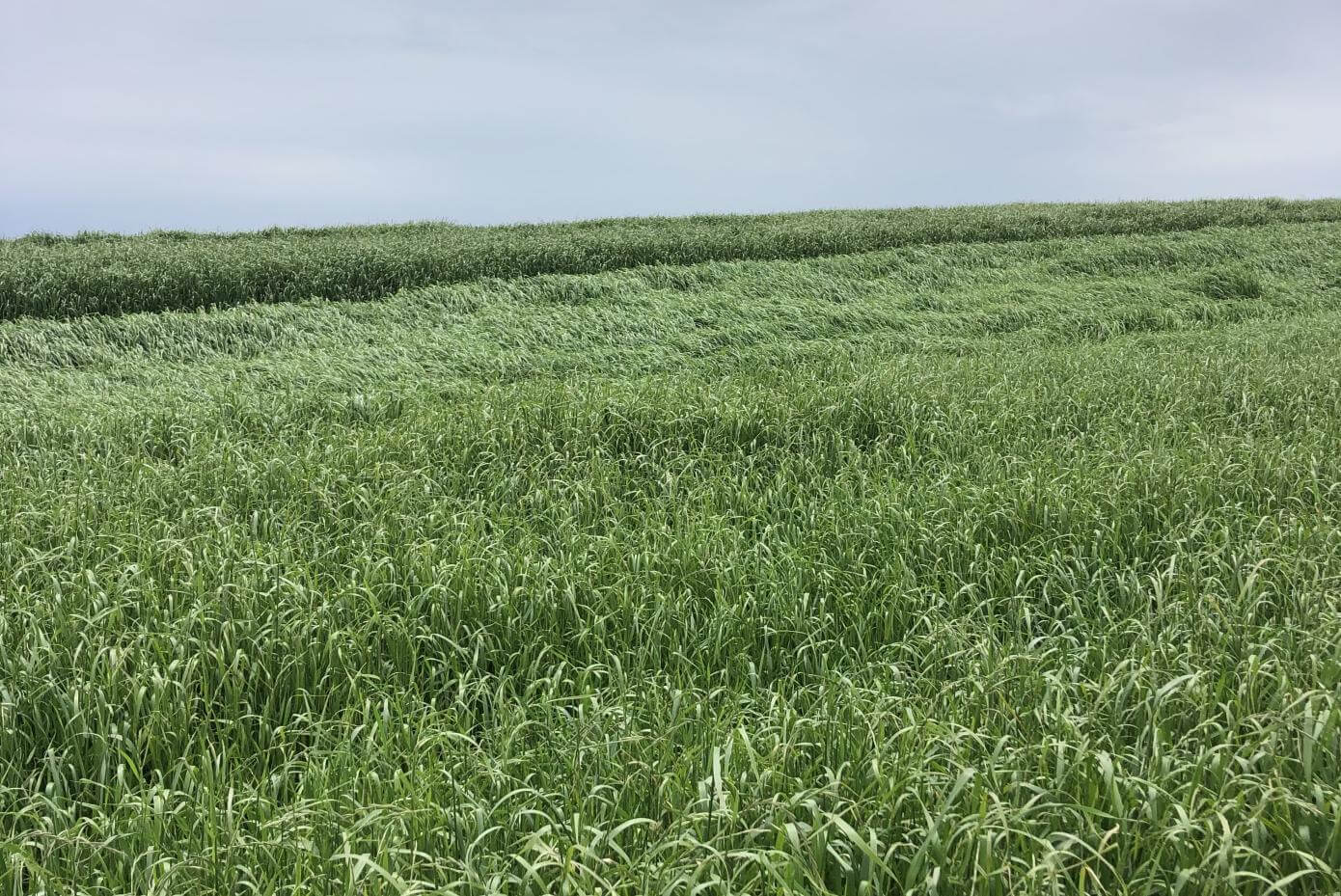
Koga in Alabama - April 2020
Koga for the South
Southern producers who are transitioning to another summer annual crop and have need of late grazing or stored feed should find Koga very useful. A hay producer in North Carolina said this about Koga: “How loud can you say Koga!? I made 75 dry round 60-inch rolls on ten acres!”
Producers overseeding permanent warm-season pastures should be aware that Koga’s late growth might hinder or damage re-emergence of warm season species. See our other Forage Ryegrasses for varieties more suited for early harvest.
Winter Hardiness
Koga has exhibited very good winter hardiness as exemplified in this data from University of Kentucky where severe incidents of freeze injury struck forage plots two years in a row.
University of Kentucky
Winter/Freeze Injury
Lexington, KY
|2018-2019, 2019-2020
| 2018-19 Yield Trial | 2019-2020 Yield Trial | |
|---|---|---|
| Variety | Winter Injury - Feb 6, 20191 | Early Freeze Injury (%) - Dec 9, 20192 |
| Koga | 1.8 | 3% |
| Marshall | 1.8 | 4% |
| Winterhawk | 2.0 | 2% |
| Gulf | 2.8 | 70% |
| Feast II | 4.5 | 59% |
| LSD | 2.5 | 18% |
Koga's Forage Quality
University of Tennessee
Forage Quality
Greeneville, TN
|2018-2019
| April 22 | CP | ADF | NDF | TDN |
|---|---|---|---|---|
| Koga | 18.02 | 33.24 | 59.37 | 63.79 |
| Average* | 14.32 | 31.35 | 52.33 | 65.77 |
| May 29 | CP | ADF | NDF | TDN |
| Koga | 10.2 | 44.90 | 67.59 | 51.57 |
| Average* | 8.98 | 42.05 | 66.01 | 54.55 |
Koga's Yield Data
Ohio
Ohio State University
Forage Yield (Tons DM/A)
South Charleston, OH
|2017-2018
| Variety | 11-May | 29-May | 19-Jun | Season Total |
|---|---|---|---|---|
| Koga | 3.45* | 1.18* | 1.19* | 5.86* |
| Winterhawk | 2.78 | 0.79 | 0.71 | 4.30 |
| Kodiak | 2.77 | 0.68 | 0.66 | 4.12 |
| McKinley | 2.59 | 0.63 | 0.54 | 3.78 |
| New Dawn | 2.57 | 0.69 | 0.61 | 3.89 |
| Sheriff | 2.06 | 0.66 | 0.39 | 3.13 |
| LSD P=.05 | 0.37 | 0.3 | 0.12 | 0.50 |
Tennessee
University of Tennessee
Forage Yield (Tons DM/A)
Crossville, TN
|2017-2018
| Variety | 10-Apr | 2-May | 29-May | Season Total |
|---|---|---|---|---|
| Koga | 1.88 | 1.07 | 1.77* | 4.72* |
| Kodiak | 1.55 | 1.24 | 1.45 | 4.23* |
| Winterhawk | 1.54 | 1.77* | 1.41 | 4.73* |
| Ribeye | 1.76 | 1.48* | 1.36 | 4.59* |
| Nelson | 2.53 | 1.11 | 1.27 | 4.91* |
| Jumbo | 1.73 | 1.38* | 1.27 | 4.38* |
| Angusta | 1.72 | 1.26* | 1.25 | 4.24* |
| Fria | 2.17 | 1.50* | 1.16 | 4.83* |
| Jackson | 2.22 | 1.20 | 1.11 | 4.53* |
| Credence | 1.56 | 1.30* | 1.10 | 3.97 |
| Maximus | 1.67 | 0.73 | 1.03 | 3.42 |
| GRAZER | 1.67 | 1.37* | 0.93 | 3.97 |
| LSD | ns | 0.52 | 0.31 | 1.04 |
Kentucky
University of Kentucky
Forage Yield (Tons DM/A)
Lexington, KY
|2021-2022
| Variety | December 3 | April 30 | May 9 | June 6 | Total |
|---|---|---|---|---|---|
| Marshall | 0.91 | 1.84 | 1.01 | 1.00 | 4.75* |
| Winterhawk | 0.87 | 1.78 | 1.06 | 0.96 | 4.67* |
| Grazekeeper | 0.74 | 1.66 | 1.10 | 1.13 | 4.63* |
| Meroa | 0.81 | 1.71 | 1.08 | 0.98 | 4.58* |
| Koga | 0.81 | 1.66 | 1.03 | 1.02 | 4.52* |
| Dexter | 0.65 | 1.46 | 1.06 | 1.06 | 4.24* |
| FrostProof | 0.80 | 1.32 | 0.89 | 0.80 | 3.80 |
| Feast II | 0.62 | 0.71 | 0.98 | 0.87 | 3.17 |
| Gulf | 0.80 | 0.63 | 0.91 | 0.79 | 3.13 |
| LSD | 0.21 | 0.33 | 0.16 | 0.23 | 0.70 |
University of Kentucky
Forage Yield (Tons DM/A)
Lexington, KY
|2019-2020
| Variety | November 6 | April 1 | April 28 | May 21 | June 8 | June 25 | Total |
|---|---|---|---|---|---|---|---|
| Meroa | 1.16 | 0.64 | 1.04 | 0.84 | 0.62 | 0.27 | 4.56* |
| Dexter | 0.93 | 0.69 | 0.98 | 0.83 | 0.58 | 0.33 | 4.33* |
| Koga | 1.15 | 0.64 | 0.99 | 0.4 | 0.54 | 0.23 | 4.25* |
| Marshall | 1.07 | 0.72 | 0.92 | 0.76 | 0.45 | 0.30 | 4.22* |
| FrostProof | 0.98 | 0.70 | 0.81 | 0.77 | 0.38 | 0.29 | 3.93* |
| Grazekeeper | 0.61 | 0.73 | 0.84 | 0.8 | 0.53 | 0.25 | 3.76 |
| Feast II | 0.90 | 0.36 | 0.83 | 0.82 | 0.45 | 0.29 | 3.64 |
| Gulf | 1.09 | 0.27 | 0.77 | 0.63 | 0.39 | 0.21 | 3.36 |
| LSD | 0.37 | 0.14 | 0.24 | 0.18 | 0.15 | 0.11 | 0.57 |
Enhance Your Seed
We provide an array of seed enhancements, including bio stimulants, macro and micronutrients, water absorbents, fungicides, and colorants. These are available for all seed types and uses.
Planting Instructions
Prior to Planting
For optimal performance, prior to planting, obtain a soil test. Amend soil according to recommendations and fertilize after planting according to recommendations and use.
How to Plant
Koga can be drilled or broadcast into either a prepared seedbed or an existing sod bed. For prepared seedbed, lightly disc and pack well. For existing sod bed, reduce existing sod height as much as possible.
Fertilization
Application of fertilizer (following soil test recommendations) throughout the growing season and/or use of legumes will provide maximum forage tonnage and root growth.
Seeding Rate
Planting Dates
Koga can be planted throughout the year. However, maximum utilization will be obtained by planting in the fall as soon as adequate moisture is available. If planted at other times of the year, performance will be limited.
Planting Map
Planting Depth
1/8"-1/2"
Optimal pH
6.0-7.0
Germination
5-10 days
Fertilizer
Application of fertilizer (per soil test results) throughout the growing season and/or use of legumes will provide maximum forage tonnage and root growth.
